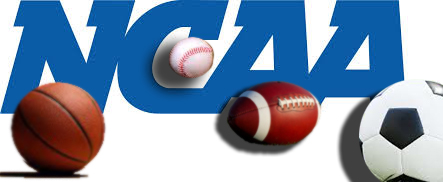- San Leandro High
- NCAA Clearinghouse

Information about the NCAA Clearinghouse
-
San Leandro High School supports our elite student athletes on their road to collegiate athletics. Although a very small number of athletes will be able to play DI or D2 College Athletics, all SLHS athletes must maintain basic academic eligibility in order to compete in high school, and, in order to be eligible to become an NCAA Athlete, they must meet NCAA Core Academic requirements throughout their high school career. High school athletes must also register with the NCAA so they can be screened through the Clearinghouse for eligibility. This page will direct you to the best resources to learn more about these requirements and this process.
What is the NCAA Clearinghouse?
The NCAA Clearinghouse is an essential step in becoming eligible to play college sports. Over 180,000 potential college athletes register with the NCAA every year.
If you want to play NCAA college sports and receive a scholarship at the DI or DII level, you will need to register and be cleared by the NCAA. The Eligibility Center is the organization within the NCAA that determines the academic eligibility and amateur status for all NCAA DI and DII athletes.
NCAA schools require college-bound student-athletes to build a foundation of high school courses to prepare them for the academic expectations in college.
Find your high school’s list of NCAA core courses
Learn more about Division I academic requirements
Learn more about Division II academic requirements
What are core courses?
Not all high school and A-G approved classes count as NCAA core courses. Students interested in playing for D1 or D2 must complete 16 core classes. For D1, you must complete 10 of your 16 core courses, including seven in English, math or natural/physical science, before the start of your seventh semester.
The 16 NCAA-approved core courses must be completed in eight academic semesters or four consecutive academic years from the start of ninth grade. If you graduate from high school early, you still must meet core-course requirements.
Classes that are not NCAA core courses include:
- Classes in non-core areas, fine arts or vocations such as driver education, typing, art, music, physical education or welding.
- Personal skill classes such as personal finance or consumer education.
- Classes taught below grade level, at a slower pace or with less rigor or depth. These classes are often titled basic, essential, fundamental or foundational.
- Classes that are not academic in nature such as film appreciation, video editing or greenhouse management.
If you take a high school class such as Algebra 1 or Spanish 1 before you start ninth grade, the class may count for your 16 core courses if it is on your high school’s list of approved core courses and is shown on your high school transcript with a grade and a credit.
Credit
You can earn credit for a core course only once. If you take a course that repeats the content of another core course, you earn credit for only one of these courses and the higher grade counts toward your core-course GPA.
Generally, you receive the same number of credits from the NCAA for a core course that you receive from your high school for the class. One academic semester of a class counts for .5 of a core course credit. One academic trimester of a class counts for .34 of a core-course credit. One academic quarter of a class counts for .25 of a core-course credit. A one-year class taken over a longer period of time is considered one core course and is not awarded more than one credit.

